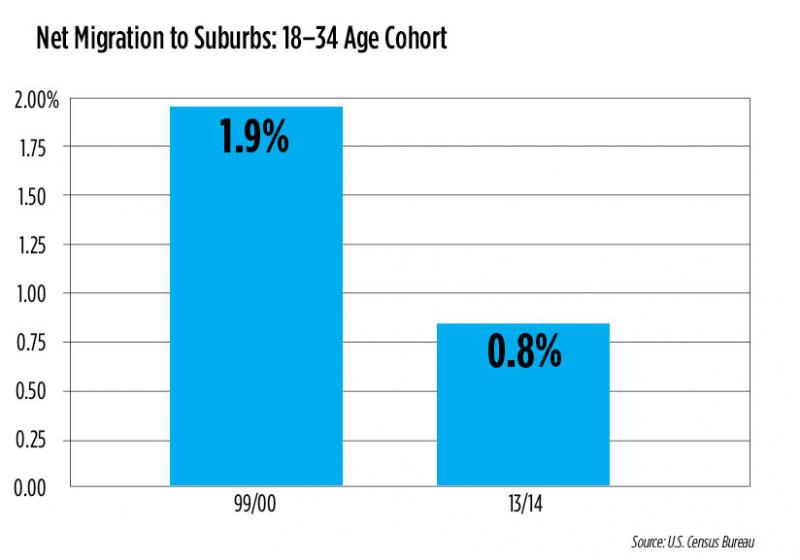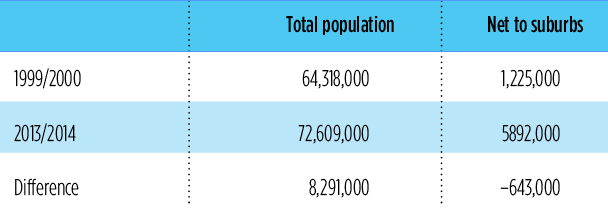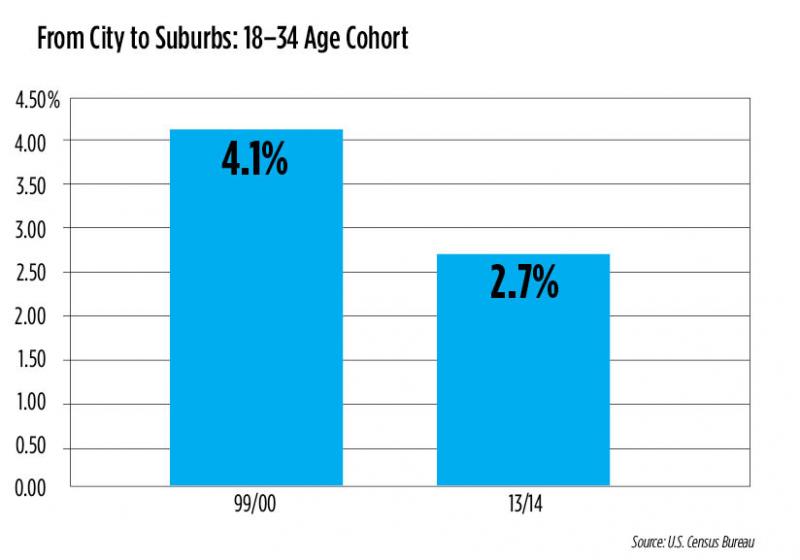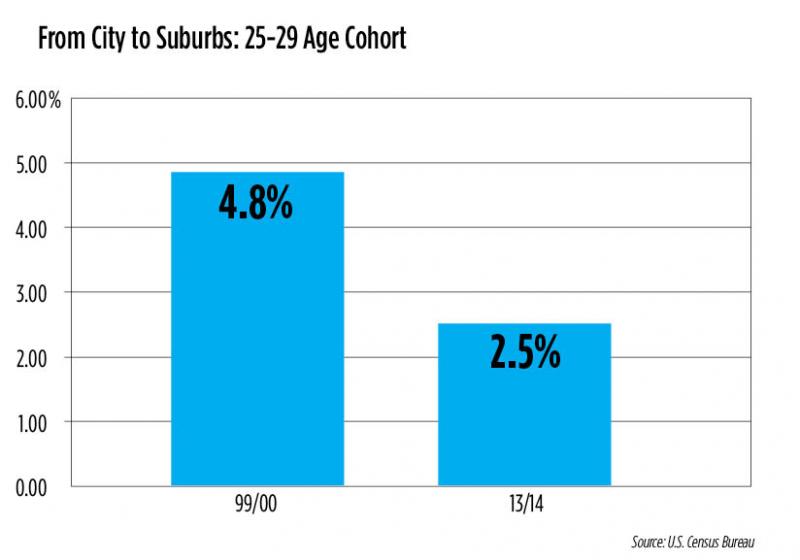There has been a flurry of news reports recently touting the droves of Millennials moving to the suburbs. Although this may make for a great headline, the message is not representative of what is actually occurring within the housing market.
First, the cited survey by the National Association of Realtors (NAR) focuses on Millennial homebuyers, not their migration patterns--the latter includes both buyers and renters. Second, the key point in the survey’s lead stated that when Millennials do buy a home, they are buying outside of the central city. This is not news, given central city pricing and substandard city schools. However, the article is not making the point that all Millennials are moving to the suburbs.
On this subject, we have a few thoughts:
1. Net migration of 18-34-year-olds to the suburbs is nothing new.
2. What is new is the substantial decline in the rate of net migration to the suburbs (the difference between those moving from the city to the suburbs and from the suburbs to the city).
- During the period 1999/2000, net migration of 18-34-year-olds to the suburbs was 1.9 percent of 18-34-year-olds. During the 2013/2014 period, this declined by more than half to 0.8 percent.

Because of this significant decline, even though the size of the 18-34-year age cohort increased from 64 million to 72 million between 1999 and 2014, the net number moving to the suburbs declined by 643,000--essentially more Millennials are living in cities due to reduction in outmigration and population growth.

3. The reduction in net migration to the suburbs has been caused by a significant reduction in the percentage of people moving from the city to the suburbs.
- During the period 1999/2000, 4.1 percent of 18-34-year-olds moved from the city to the suburbs. During the period 2013/2014, 2.7 percent moved from the city to the suburbs, a 36 percent decline. Millennials are delaying the move from Gotham to Mayberry.

4. “I won’t go!” Interestingly, the subset of 25-29-year-olds seem to be the age group most resisting the move to Mayberry.
- The rate of migration among 25-29-year-olds from the city to the suburbs declined nearly 50 percent between the 1999/2000 and 2013/2014 timeframes, falling from 4.8 percent to 2.5 percent.

5. As we wrote about in a research piece on our website titled, “Millennial Mirage,” Millennials aren’t necessarily different in their housing habits, as they are having children and wanting to own homes, but they are delaying these events. This factor, along with the sheer size of the Millennial generation, is creating a near-term demand tailwind. However, as the next generation coming behind the Millennials is smaller, expect that today's demographic and lifestyle tailwind may very well become a headwind in the future. Many real estate investors are building for today's demand and potentially are not planning for reductions in future demand.
Summary: Contrary to recent reporting, Millennials are increasingly delaying the move from Gotham to Mayberry, creating a significant tailwind for urban multifamily housing. However, Millennials are only delaying their migration and will eventually succumb to the call of the "burbs" as previous generations have in search of better schools and more space.

